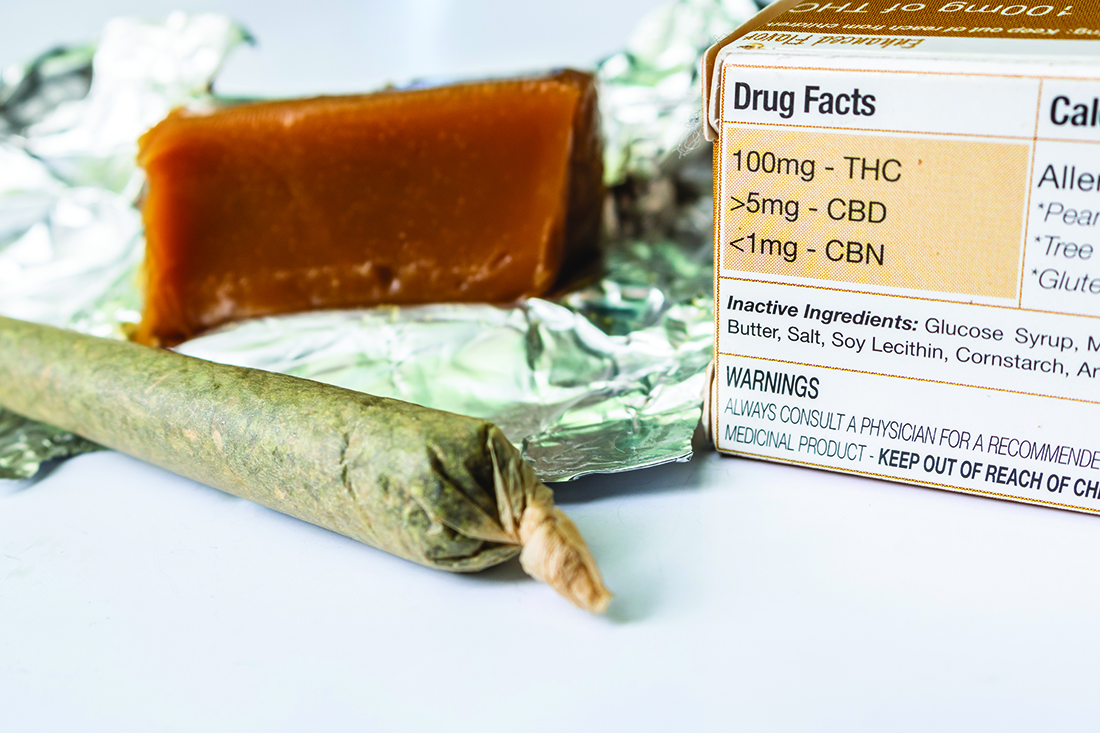There is a new, growing industry cropping up throughout the United States. Perhaps you’ve heard of it–cannabis. While legalization is in its infancy, the legal marijuana space reminds me of another industry I was involved in very early on—digital marketing. Entrepreneurs involved in the production and selling of legal cannabis products face the same problems e-marketers faced in the 1990s. And, those in the cannabis industry stand to benefit from the types of research we conducted back then to illuminate consumer needs in a rapidly evolving space. Allow me a brief trip down memory lane.
In the mid-1990s, I worked for a company called Modem Media, which billed itself as the world’s first interactive agency. Our clients included big brands such as Delta Air Lines, Citibank, AT&T, and JCPenney, and we were tasked to build or rebuild their early websites as well as create advertising designed to drive users to these sites.
Here is the thing: since the Web was so new, no one knew what consumers wanted in a website for Citibank or in an online booking experience for Delta. That’s where research came in—we turned to tried-and-true research methods, including traditional focus groups and surveys, to uncover consumer needs and evaluate concepts. Additionally, we employed usability testing to work out user experience kinks in what we built as well as to identify areas of improvement.
Just as all those clients benefitted greatly from the foundational research that was identifying needs, preferences, etc., among those early Web users, another industry is demonstrating the need for similar insights—it just does not know it yet. That industry is legal cannabis.
Cannabis is legal for recreational purposes in 10 US states and legal for medicinal-only purposes in 33 states. With Canada having legalized marijuana across the country, and more US states considering legalizing cannabis for recreational purposes, investors and entrepreneurs are eager to plant their money in the ground and watch it flower.
Many are so focused on all the red tape involved in setting up a cannabis business that their eyes are not on the marketing ball. And while understandable, this is a missed opportunity, as consumers will be overwhelmed with choice and will have a hard time navigating through all the available options. Making a compelling case regarding why a particular cannabis product (or dispensary) deserves the consumers’ dollars requires the same amount of marketing rigor that CPG, financial services, and tech sector clients put into their research.
So, I wanted to conduct some primary research designed to bring the modern cannabis consumer to life and to prove my points to potential clients in this space; however, I had three primary hurdles to get this project off the ground:
- Since this research was being self-funded, I did not want it to break the bank.
- Time was of the essence—I only had few days in my schedule where I could field research between client commitments.
- I wanted to conduct the research in states that had legalized cannabis for both adult recreational and medicinal use, so that I could get a wide range of cannabis consumers.
Given these challenges, I decided to interview people by webcam using my Zoom account. This enabled me to interview people from a number of states where cannabis is legal for both recreational and medicinal purposes including California, Colorado, Washington, and Oregon—all without leaving my home office in Connecticut. With regard to recruiting, I used a self-service platform called Respondent (respondent.io) that allowed me to program and launch a screener within a few hours and then hand-pick participants to interview the following day (participants schedule themselves through the platform based on a schedule that the moderator creates). Because Respondent’s business model charges recruiting fees as a percentage of the incentives, my investment was minimal (under $1,000 to conduct eight hour-long IDIs).
I used tried-and-true projective techniques such as picture collaging to uncover how cannabis may have had a positive impact on each participant’s life. (See DIY Tools article in this issue on using Zoom for projective techniques.) Additionally, using collages helped me uncover the anxiety and overwhelmed feelings that first-time buyers felt when shopping at dispensaries and faced with all the choices. The following are highlights of the story I have been presenting to prospective clients in this space, which are also summed up in a series of video vignettes that can be found at www.QRCA.org/VIEWS-033.
It All Starts with the Consumer
Today’s cannabis consumer is not the stereotypical stoner dude immortalized by Sean Penn’s character Jeff Spicoli in Fast Times at Ridgemont High, nor is it the aging hippie looking to relive his or her Woodstock days. They are executives, parents, and teachers. Grandparents, scientists, and athletes can also be found shopping in dispensaries. They all have different reasons for partaking in cannabis. Growers, retailers, and other professionals in this space not only need to make decisions around who they want to target but also must keenly understand why these consumers use in order to craft messages that will resonate. For example, my research revealed that there are many need states for usage—which include treating anxiety, sleep disorders, depression, and pain management, and the desire to avoid prescriptions.
This is where marketing research firms can help. Tools such as customer segmentation can cluster partakers into groups as well as quantify how big those groups are, helping to quantify the fiscal opportunity each group represents. We also can help bring consumer targets to life through tools such as segment videos and journey mapping, which uncover the motivations and need states each group has. Tools like these help to build the empathy required for design thinking and lead to better products and experiences for consumers.
Documenting needs is important because it was through exploring different need states that the importance of newer methods of cannabis ingestion surfaced, which in turn leads to opportunities for innovation. Partakers not only are buying good old-fashioned flowers, they also are buying edibles, tinctures, lotions/balms, waxes, and juices. And, with new and emerging methods of consumption come new devices and technology including vaporizers, pens, tinctures, oils, and topical creams.
The marketing research industry can help innovators identify whitespace opportunities for product development. Just like Delta needed to know what passengers wanted in a website back in the mid ’90s, innovators in the cannabis space would be well served to root their product development initiatives in the existing and emerging needs of their target segments as well as test their concepts to reduce the likelihood of failure. Market researchers know how to do this, and we are eager to help.
Packaging
With so many competing products in the cannabis space, informative and user-friendly packaging can help brands stand out and drive choice at the shelf. Just as our CPG clients invest heavily in packaging research to optimize ease of opening, communications, and “shelf-pop”, cannabis brands can tap into the marketing research industry’s packaging research capabilities to do the same.
Importantly, packaging must be on-brand, both visually and structurally, so consumers know about key product information (i.e., What effect can someone expect after using this product? If applicable, what will it taste like? Is there an odor?). With a number of different packaging research methods available, the marketing research industry is ready to help cannabis brands optimize packaging. The research I conducted, for example, shows a clear need for more education at point of purchase. Consumers want more information and explanations, and the product packaging and labeling are opportunities to educate.
 Retail
Retail
When I started working for Unilever after my dot-com days, I got into the field of shopper insights. We knew how important it was to understand how shoppers made decisions at the shelf, and our insights inspired in-store communications, including education and promotions, that led to incremental sales for our brands. With few exceptions, those interviewed about shopping for cannabis—particularly those new to the cannabis space—described most dispensary experiences as overwhelming and suboptimal. They described feeling intimidated and anxious, feeling out of place and not knowing where to go or what was going on in the dispensary. And make no mistake, growth will come from new users who often feel like a deer in the headlights when visiting a dispensary for the first time.
Shopper insights can help optimize the retail experience so that customers leave satisfied and therefore want to return. For example, my research uncovered the idea of shopping aids that digitally ask a few standard questions that can then be used to quickly guide customers to appropriate products. In a space where competition will increase rapidly, it is important to give shoppers a reason to visit your client’s dispensary rather than another, and we are ready to help.
Conclusion
Cannabis companies have to invest a ton of time and money just to get their businesses up and running. There is a lot of red tape involved in getting a license to grow and/or sell marijuana in states where it is legal for medicinal and/or recreational consumption. And even after a license to sell is granted, cannabis companies face a lot of backlash from the communities where they plan on opening up dispensaries. As such, entrepreneurs in this space feel as if they have bigger fish to fry than anything to do with marketing and research. While there are signs that this is starting to change—I am hearing of colleagues receiving RFPs around cannabis—companies in this space will benefit greatly from what we as researchers can offer.


Be the first to comment